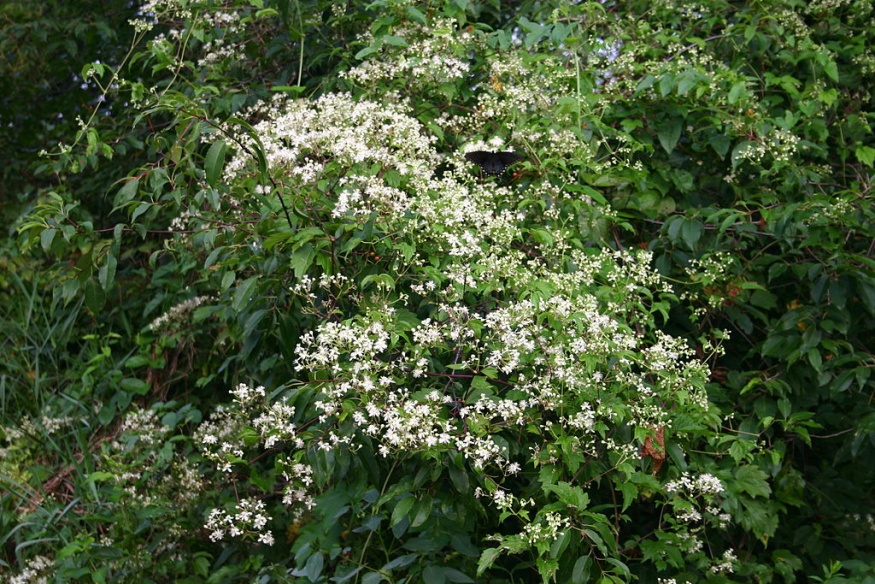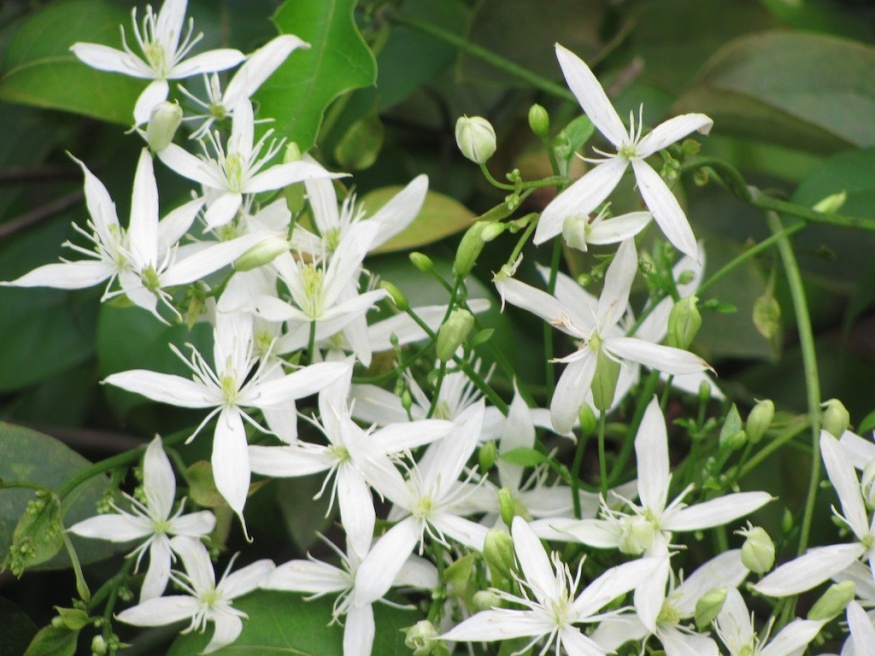Virgin's Bower

Other Names: old man's beard, woodbine, devil's darning needles, Italian clematis,
Family: Ranunculaceae Native to: Eastern North America
Hardy to zone: 3
Eco benefits: attracts pollinators, attracts birds, medicinal
Natural habitat: swamps & bogs, barren or disturbed ground, waters edge, floodplains, forest edge
Shapes: vine
Height: 12-20ft
width: 3-6ft
Growth rate: fast
Unique attractions: flowers, fruit
Tolerances: pest & desease, deer resistant, black walnut
Common uses: naturalized plantings, shade garden
Insects: aphids, scale, earwigs, slugs and snails , vine weevils
Diseases: powdery mildew, leaf spot, clematis wilt, rust, viruses
Light: full sun, partial shade, full shade
Soil: moist and fertile, well drained, wet
Reproduction type: dioecious
Virgin's bower is a flowering vine native to eastern North America. It can be found in lowlands, stream banks, fence rows, and other moist areas. The genus 'Klematis' is an old Greek word meaning 'climbing'. The vine is vigorous and spreading by either suckers or self seeding. An ideal choice for native woodland or pollinator gardens.
Virgin's bower produces and abundant display of flowers on current years growth. Even in heavy shade many flowers are produced which is an uncommon trait for flowering plants. Leaves are bright green, compound with 3 to 5 elliptic, sharply toothed leaflets. Leaf petioles are tendrilous, allowing them to climb if given support. Stems are green to purplish and hairy, becoming woody with age.
Showy, sweetly aromatic white flowers appear in late summer through fall (August to October), attracting bees, wasps, moths, butterflies, and hummingbirds. Virgin's bower is Dioecious, meaning each plant is either male of female. Clusters of interesting seeds appear on female plants. Their hairy tails resembling an 'old man's beard' hence one of its common names. Male plants flower abundantly but lack the seed display of female plants.

Stems and roots of the plant have been used medicinally by native peoples. A stem extract was used as an hallucinogen and roots used for stomach trouble, nerve treatment, and for venereal sores. Though medicinal, care should be taken as the plant is moderately poisonous to humans, dogs, cats and horses.
References
Burnham, R. J., University of Michigan. Clematis virginiana. Retrieved from http://climbers.lsa.umich.edu/?p=450
Master Gardeners of North Virginia. (n.d.). Clematis virginiana (virgins bower). Retrieved from https://www.google.com/amp/s/mgnv.org/plants/vines/clematis-virginiana-virgins-bower/
Missouri Botanical Garden. (n.d.). Clematis virginiana. Retrieved from http://www.missouribotanicalgarden.org/PlantFinder/PlantFinderDetails.aspx?kempercode=a379
NC State Extension. (n.d.). Clematis virginiana. Retrieved from https://plants.ces.ncsu.edu/plants/clematis-virginiana/